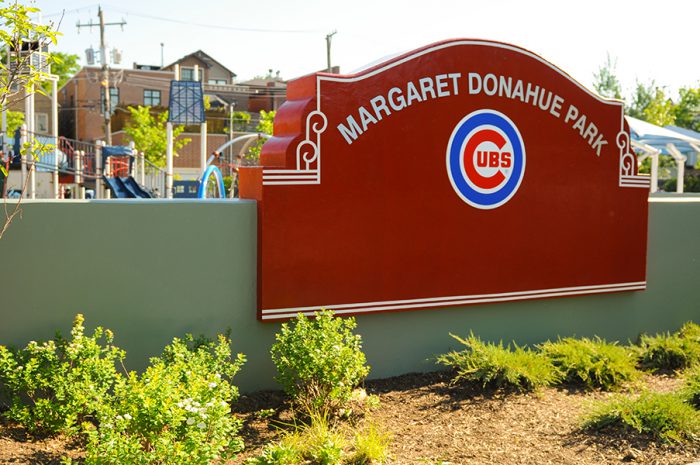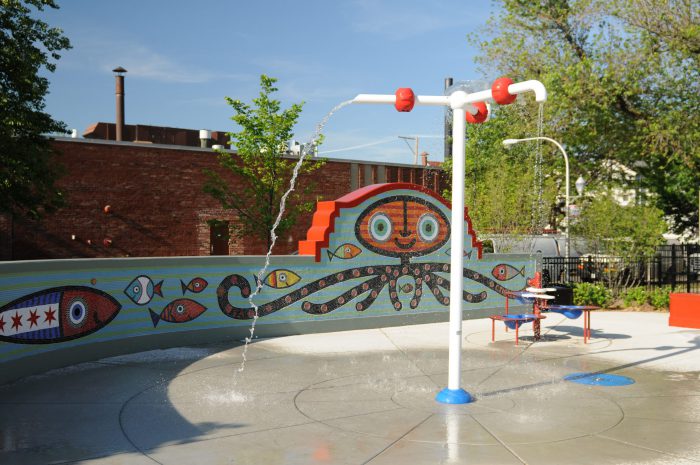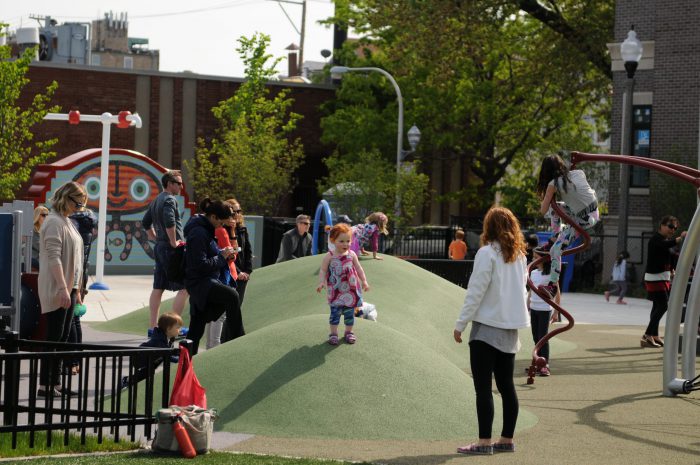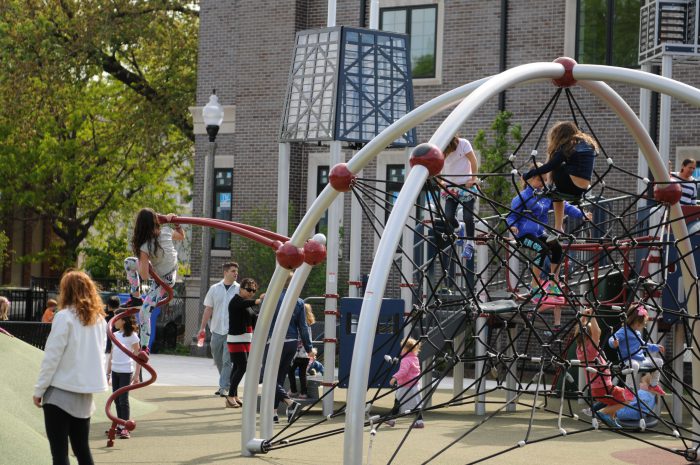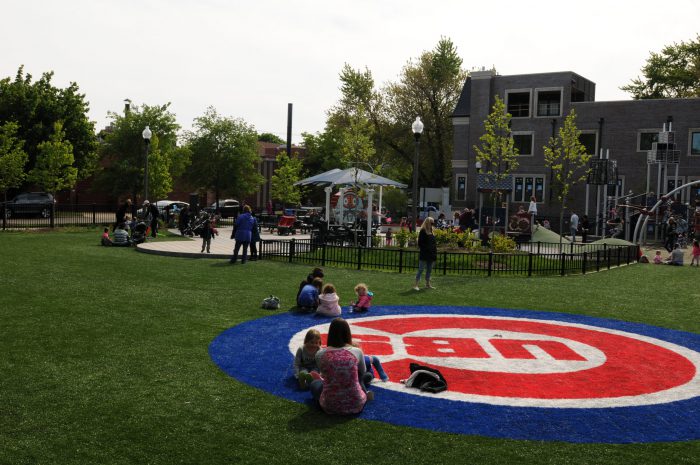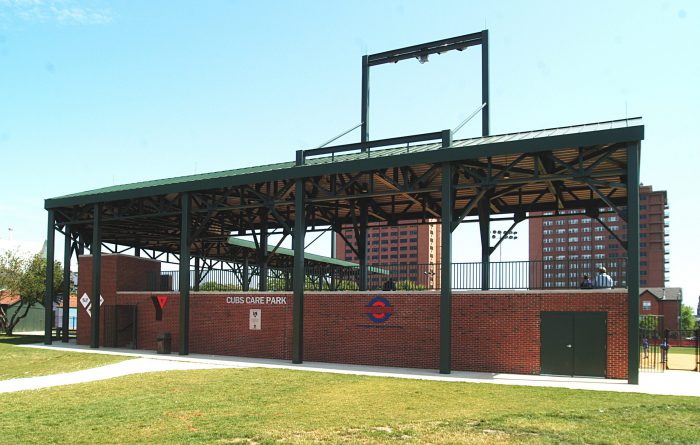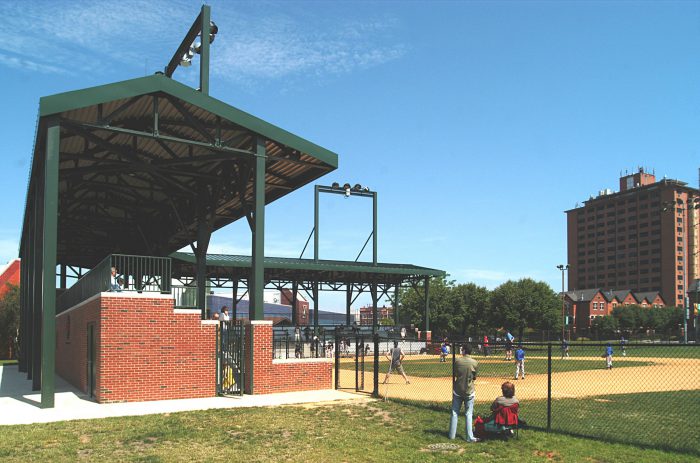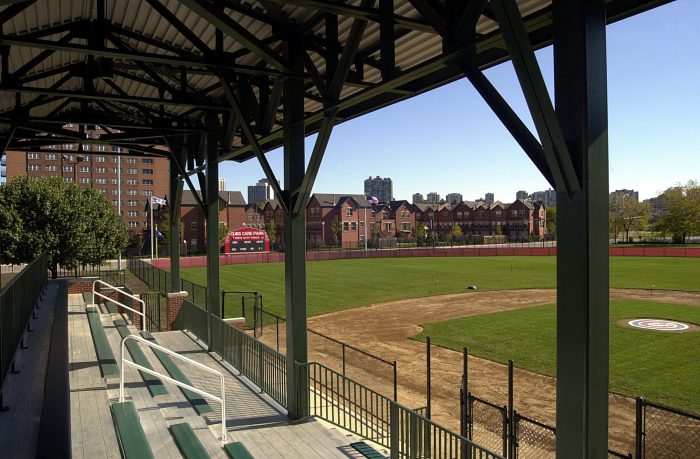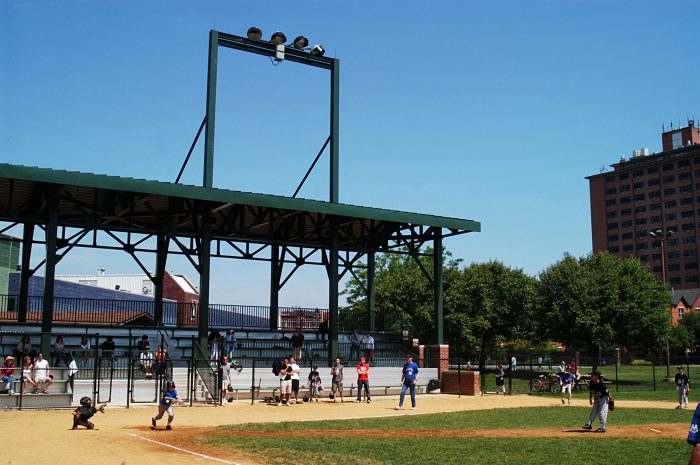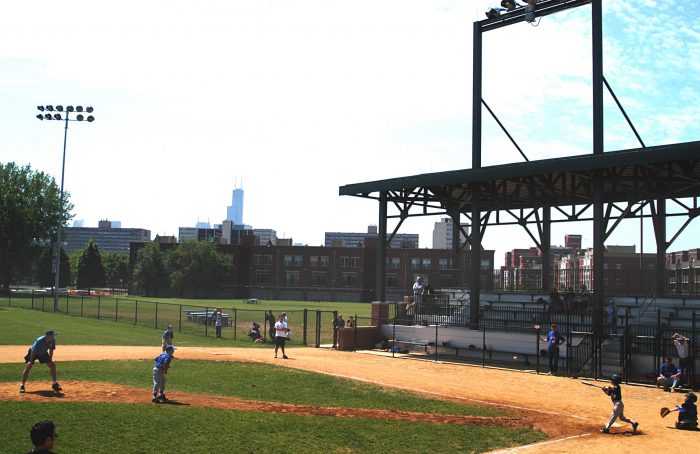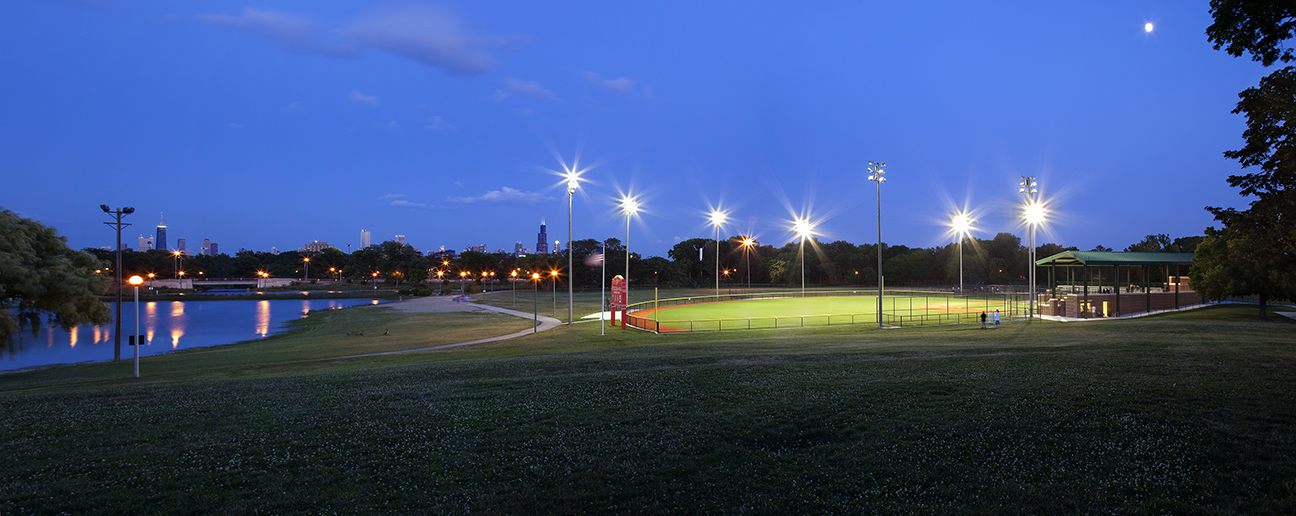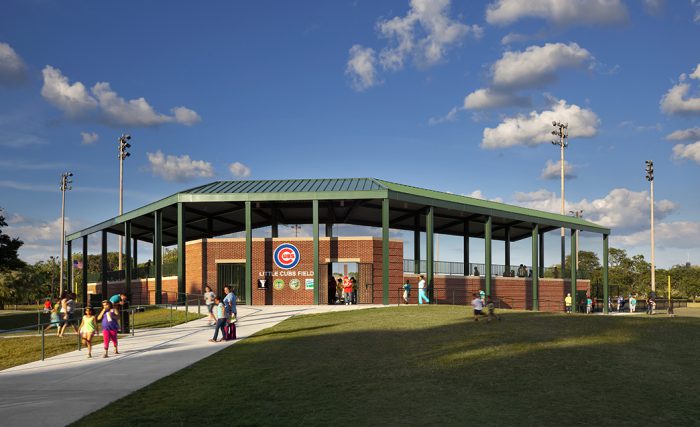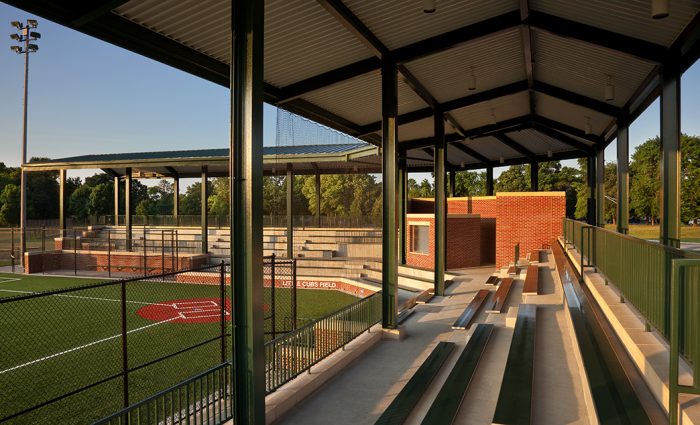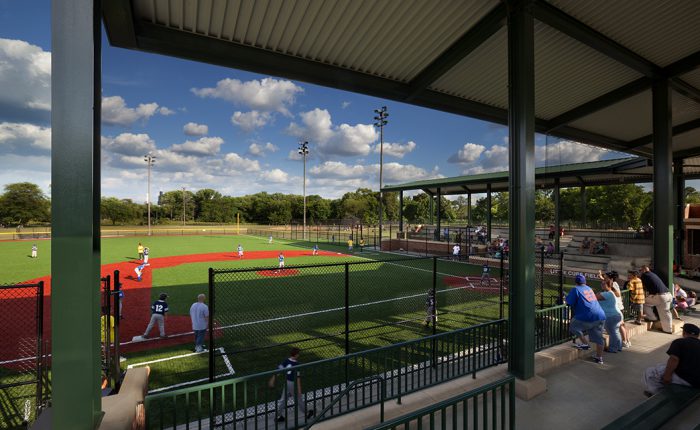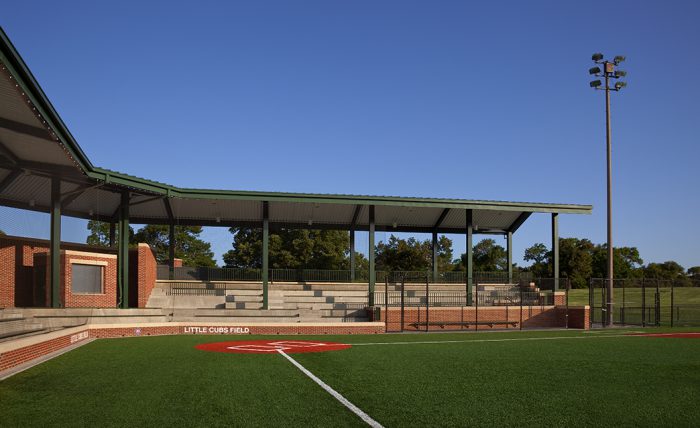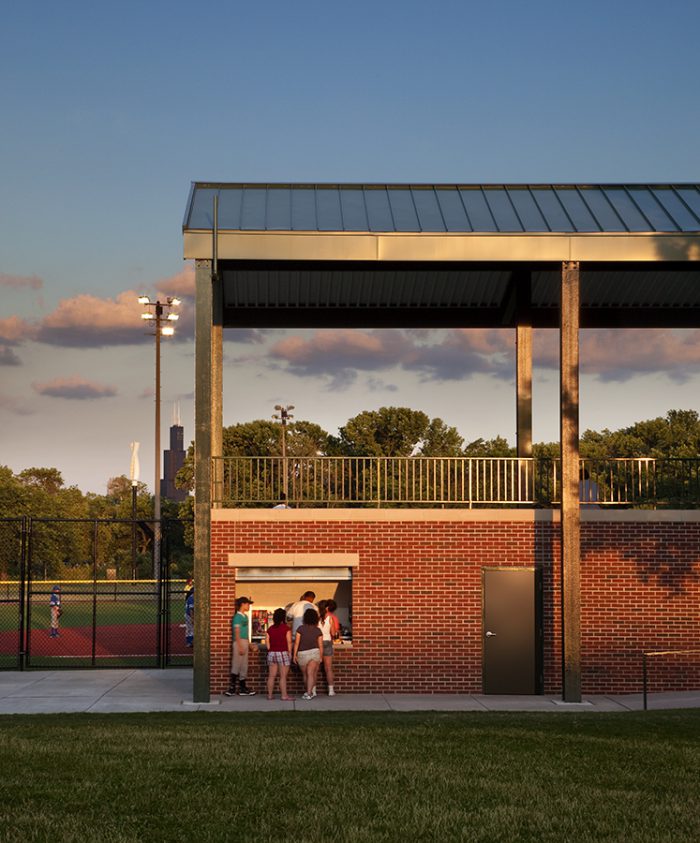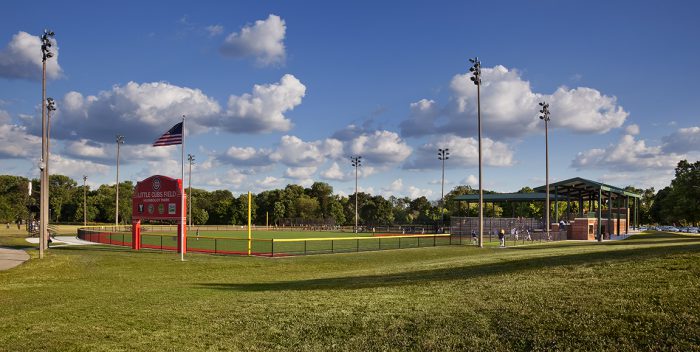CUBS CARE CHARITIES
Since it’s founding in 1998, Weiss Architects has enjoyed a relationship with the Chicago Cubs Charities for the design of their bricks-and-mortar projects for the youth of Chicago.
Margaret Donahue Park is a collaboration between the Chicago Cubs, the Chicago Park District, Alderman Tom Tunney and the neighboring residents. The 1/2 acre site in the Wrigleyville neighborhood was a remnant of the small factories once interspersed in the north side of the City. When the factories were shuttered, parts of their sites became upscale residential enclaves. The Margaret Donahue Park site was saved as a central location for open space and recreational use.
Margaret Donahue Park’s namesake was the first woman executive in major league baseball, serving as a Vice President of the Cubs organization in the 1940’s and 50’s. She is credited with inventing Ladies Day as well as the concept of season tickets.
The design of the Park was derived from intensive neighborhood participation. The water feature includes a glass mosaic mural by world famous artist and neighborhood resident David Lee Csicsko. Several of the playground equipment settings incorporate representations of famous Chicago buildings to emphasize the park’s urban nature. Margaret Donahue Park opened in May, 2015.
Cubs Care Park is about the romance of baseball. Destined to provide the children of the Near North Side with a championship little league baseball field, it has been designed both to recall the iconic images of Wrigley Field and to connect the playing fields with the surrounding community.
The design of Cubs Care Park began with an analysis of the aspects of Wrigley Field that might translate to a little league scale stadium. The most important of these became the basis for the design: intimacy between the fans and the field, the shape and character of the stadium roof structure, the materials, the scoreboard and, of course, ivy. The field, designated “Sammy Sosa Inspiration Field” in honor of his 66 home run season, is designed for championship level little league play, with prescribed dimensions and features. The grandstands were placed as close as possible to the playing field, allowing for the maximum interrelationship between fans and players. The grandstand structure was loosely modeled after Wrigley Field, with hip roof structure and exposed steel truss work. The brick, limestone and the colors used throughout the stadium match those of the big league ballpark.
The scoreboard was crafted after the famous Wrigley Field marquee. The ivy, cultivated from Wrigley Field cuttings and planted along the foul line fences, will take a few years to grow to fully enclose the field. When it does, Cubs Care Park will provide the closest experience possible to Wrigley Field for the neighborhood kids who play there. It will give them an opportunity to experience big league facilities at an early age and will become a cherished part of their childhood memories.
Cubs Care Park was selected by the Design-Build Institute of America as its 2004 National Design-Build Award for Best Project Under $5 million. It was also selected as a finalist in the 2004 Chicago Neighborhood Development Awards for Architectural Excellence.
In 2008, The YMCA disposed of the New City YMCA site and Cubs Care Park was demolished. However, through the generosity of the YMCA, The Chicago Cubs, The Parkway Foundation, the Chicago Park District and Alderman Billy Ocasio, Little Cubs Field, the next generation of Cubs Care Park, was constructed in Humboldt Park and opened for play in April, 2009.
Little Cubs Field is about the reach of baseball to provide a positive and nurturing growth opportunity for inner-city kids. This championship little league baseball field has been designed to recall the iconic images of Wrigley Field and to fit into the historic landscape of Chicago’s Humboldt Park.
Little Cubs Field was selected as a finalist for the 2009 Chicago Neighborhood Development Awards for Architectural Excellence.

